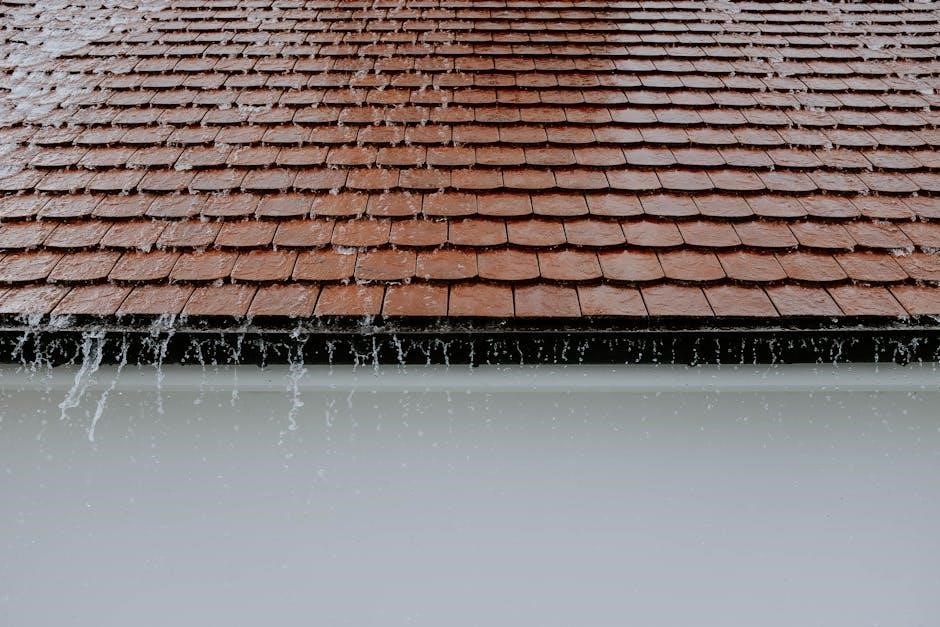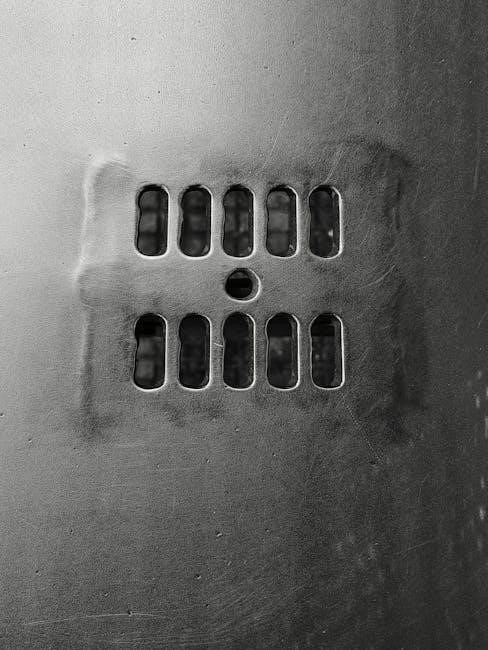The PleurX catheter is a medical device used for draining excess fluid from the chest or abdominal cavity. It is a minimally invasive solution designed to improve patient comfort and mobility by allowing fluid drainage at home. This catheter system is commonly used for managing conditions such as pleural effusion, providing effective relief from associated symptoms.
Overview of PleurX Catheter System
The PleurX catheter system is a minimally invasive medical device designed for draining excess fluid from the chest or abdominal cavity. It consists of a soft, flexible catheter inserted under the skin, connecting to a drainage bag. The system allows patients to drain fluid at home, promoting independence and comfort. Key features include a tunneled catheter for secure placement and a vacuum-sealed drainage set for safe fluid collection. The PleurX system is FDA-approved and widely used for managing conditions like pleural effusion, offering an effective alternative to repeated thoracenteses.
Importance of Proper Drainage Techniques
Proper drainage techniques are essential for ensuring patient safety and the effectiveness of the PleurX catheter system. Correct methods prevent complications such as infection, catheter blockage, or fluid leakage. Improper drainage can lead to inaccurate fluid measurement, which may delay medical follow-up. Additionally, improper techniques may cause discomfort or injury to the patient. Following sterile procedures and manufacturer guidelines is critical to maintain catheter functionality and prevent infections. Proper drainage also ensures accurate fluid measurement, which is vital for monitoring the patient’s condition and adjusting treatment plans. Adhering to proper techniques enhances patient safety and improves overall treatment outcomes.

Pre-Drainage Preparation
Before drainage, ensure the catheter is properly secured and the site is clean. Review the patient’s medical history and confirm the drainage setup is ready for use.
Gathering Necessary Equipment
To perform PleurX catheter drainage, gather all essential supplies. This includes the PleurX drainage set, collection chamber, tubing, and any required connectors. Ensure you have antiseptic solution, gloves, and gauze for site preparation. Review the manufacturer’s instructions for specific components. Organize the equipment in a clean, accessible area to streamline the process. Verify that all items are sterile and within their expiration dates. Having everything ready beforehand helps ensure safety and efficiency during the procedure. Always consult with a healthcare provider if unsure about any equipment or its proper use.
Preparing the Patient and Environment
Before starting the drainage process, ensure the patient is comfortable and positioned to allow easy access to the catheter site. Clean and disinfect the area around the catheter to minimize infection risk. The patient should wear loose, comfortable clothing to facilitate access. Prepare a clean, flat surface for the drainage equipment, ensuring all supplies are within reach. Use sterile gloves and antiseptic solution to maintain asepsis. Educate the patient on deep breathing exercises to help expand the lungs and enhance fluid drainage. Always follow proper infection control measures to safeguard both the patient and caregiver.

Step-by-Step Drainage Process
The PleurX catheter drainage involves connecting the drainage set to the catheter, ensuring proper flow, and monitoring fluid collection. Follow sterile technique throughout the process.
Connecting the Drainage Set to the Catheter
Connecting the PleurX drainage set to the catheter requires careful attention to maintain sterility and ensure proper function. Begin by cleaning the catheter port with an alcohol wipe and allowing it to dry. Next, remove the protective cap from the drainage set connector and attach it firmly to the catheter, ensuring a secure connection. Gently twist the connector clockwise until it clicks into place. Verify the connection by checking for any leaks or resistance. If resistance is felt, consult a healthcare provider immediately to avoid complications. Proper connection is critical for effective drainage and patient safety.
Emptying the Drainage Bag and Measuring Fluid
Begin by washing your hands and putting on disposable gloves. Locate the drainage bag’s drain port, then open it by twisting or sliding the cap. Pour the collected fluid into a measuring container to assess the volume. Note the fluid’s color and consistency, as these can indicate potential issues. After measuring, clean the drain port with an alcohol wipe and close it securely. Dispose of the gloves and any soiled materials properly. Record the measured fluid volume and any observations for your healthcare provider. Regular monitoring helps track progress and ensures proper management of drainage.
Monitoring and Measurement
Monitoring and measuring drainage is crucial for patient care. Regularly assess fluid volume, color, and consistency. Document findings to aid healthcare providers in managing the condition effectively.
Assessing Drainage Volume and Consistency
Regularly check the amount and appearance of drained fluid. Measure volume using the collection chamber’s markings. Consistency should be clear, pale yellow, or straw-colored. Note any changes, such as blood or cloudiness, as these may indicate complications. Document findings accurately for medical records. This helps monitor treatment progress and detect potential issues early. Proper assessment ensures effective management and patient safety, guiding further interventions if needed. Always follow healthcare guidelines for evaluation and reporting abnormalities.
Recording Drainage Metrics for Medical Follow-Up
Accurate documentation of drainage volume, color, and consistency is crucial for medical follow-up. Record the amount of fluid drained, noting any changes or abnormalities. Track patterns over time to assess treatment effectiveness. Use a log or chart provided by healthcare providers to maintain detailed records. Include observations about the fluid’s appearance, such as clarity or presence of blood. This data helps guide further treatment decisions and ensures continuity of care. Regular updates also aid in identifying potential complications early, promoting better patient outcomes and safety. Proper documentation is essential for effective communication between patients and healthcare teams.

Post-Drainage Care and Maintenance
Proper care after drainage involves cleaning the catheter site with antiseptic solution and securing it to prevent dislodgment. Monitor for signs of infection or blockage.
Cleaning and Securing the Catheter Site
Cleaning the catheter site is essential to prevent infection. Use an antiseptic solution, such as chlorhexidine, to gently clean the area around the catheter. Ensure the site is dry before securing the catheter. Use sterile gauze or a transparent dressing to cover the site, and tape the catheter securely to prevent movement or dislodgment. Regularly inspect the dressing and site for signs of redness, swelling, or drainage, which may indicate infection. Proper securing helps maintain catheter function and reduces the risk of complications.
Disposing of Used Materials Safely
After draining, dispose of used materials in a biohazard container to prevent infection risk. Ensure the drainage bag and any contaminated items are sealed in a biohazard bag before disposal. Always wash your hands thoroughly with soap and water after handling used materials. Proper disposal prevents environmental contamination and maintains safety. Follow local regulations for biohazardous waste disposal. Keep sharps, such as needles, separate and in a puncture-proof container. Regularly check with your healthcare provider for specific guidelines on waste management to ensure compliance and safety.

Troubleshooting Common Issues
Common issues include blockages, kinking, or slow drainage. Flushing the catheter with saline may resolve blockages. Ensure proper catheter positioning and check for kinks regularly.
Addressing Blockages or Slow Drainage
If drainage slows or stops, check for kinks or twists in the tubing. Gently straighten the catheter and tubing to restore flow. For blockages, flush the catheter with sterile saline solution according to the manufacturer’s instructions. Ensure the drainage bag is below chest level to prevent backflow. If issues persist, consult a healthcare provider for further evaluation or potential catheter replacement. Regular maintenance and proper technique can help minimize the risk of blockages and ensure effective drainage.
Recognizing and Managing Potential Complications
Monitor for signs of infection, such as redness, swelling, or pus around the catheter site. If detected, seek medical attention promptly. Leakage of fluid around the catheter or dislodgment requires immediate correction to prevent complications. Ensure the catheter is securely anchored to avoid movement. If air enters the catheter, it may cause lung issues, so inspect the system regularly. Patients should report any shortness of breath, chest pain, or fever to their healthcare provider. Proper care and adherence to sterile techniques can minimize these risks and ensure safe, effective drainage.
Proper drainage using the PleurX catheter improves symptoms and quality of life. Regular follow-ups with healthcare providers ensure optimal management and address any concerns promptly.
Final Checks Before Completion
After completing the drainage process, ensure the catheter is securely fastened to prevent dislodgment. Verify the drainage system is functioning properly and free from leaks. Clean and dry the catheter site thoroughly, applying an antimicrobial ointment if prescribed. Dispose of all used materials safely, following biohazard protocols; Document the total fluid drained and any observations. Ensure the patient is comfortable and aware of signs indicating complications. Confirm the next follow-up appointment and provide clear instructions for ongoing catheter care. Review emergency contact information and ensure the patient understands when to seek immediate medical attention.
Scheduling Follow-Up Appointments
Regular follow-up appointments are essential to monitor the catheter’s function and the patient’s condition. Schedule these appointments as directed by the healthcare provider, typically within 1-2 weeks after the procedure. During these visits, the provider will assess the catheter site, check for complications, and evaluate the effectiveness of drainage. Patients should maintain a log of drainage volume and consistency to share with their provider. Follow-ups ensure proper catheter maintenance and address any concerns promptly. Attend all scheduled appointments to prevent complications and maintain optimal health outcomes.

